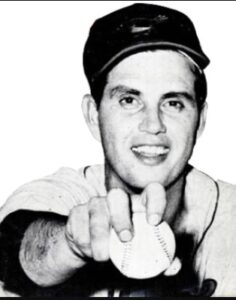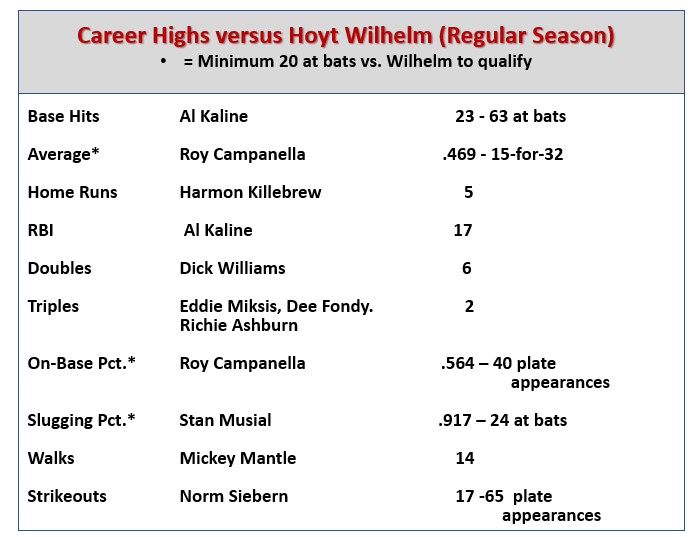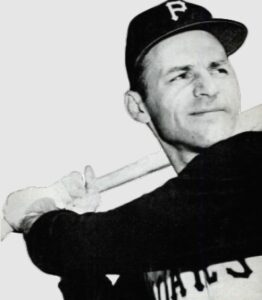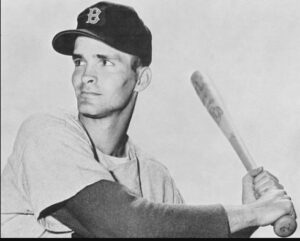Welcome to the 18th post in the Baseball Roundtable’s “Who’s Your Daddy?” series, where we take a look at Roundtable-selected lineups that performed exceptionally well against some of MLB’s greatest pitchers.
As always, I would stress that the pitchers included in the Who’s Your Daddy? series are among the “best in the business.” They are selected not because of the players who performed well against them, but rather because success among hitters when they were on the mound was the exception rather than the rule. We’ve looked at pitchers from a wide range of eras – from Carl Hubbell to Bob Feller to Nolan Ryan to Justin Verlander. Note: For those unfamiliar with the series, it’s origins are explained at the end of this post.
___________________________
Before we get started on this edition, here are links to the previous editions of this series.
Please note: For still active pitchers, the stats are as they stood on the date of the post.
- Nolan Ryan, click here.
- Sandy Koufax, click here.
- Pedro Martinez, click here.
- Bob Gibson, click here.
- Randy Johnson, click here.
- Greg Maddux, click here.
- Justin Verlander, click here.
- Bob Feller, click here.
- Roger Clemens, click here.
- Max Scherzer, click here.
- Tom Seaver, click here.
- Mariano Rivera, click here.
- Warren Spahn, click here.
- Lefty Grove, click here.
- Steve Carlton, click here.
- Robin Roberts, click here.
- Carl Hubbell, click here.
If you go back through past editions of “Who’s Your Daddy?”, you may find a few surprises – like how Will Clark owned Nolan Ryan; Jerry Lynch‘s .714 average versus Sandy Koufax; the fact that Brian Harper faced Roger Clemens 23 times and never struck out; how Ival Goodman (who averaged one home run each 47 at bats over his 10-season MLB career) poked six home runs in just 64 at bats against Carl Hubbell; or that Magglio Ordonez hit .500 in his career versus Mariano Rivera and never fanned against him.
____________________________
As I looked back at past posts in the series, I realized the pitchers featured in these posts had been known for a variety of pitches – blazing fastballs, sweeping curveballs, devastating change ups, wicked screwballs, darting splitters and more. However, this series has yet to feature a knuckleball specialist. Well, that time has come. Today, we feature Hall of Famer, and premier knuckleballer, Hoyt Wilhelm.
As Usual, One Things Led to Another
In keeping with the Baseball Roundtable tradition – “When I begin looking into something one thing always seems to lead to another,” the selection of Hoyt Wilhelm for this series was prompted by a report that, when Padres’ rookie knuckleballer Matt Waldron picked up a win over the A’s on September 16, it was the first MLB win for knuckleball pitcher in nearly five years (since September 20, 2018). That started me thinking about MLB’s best-ever knuckleballer and led me to feature Wilhelm in the “Who’s Your Daddy?” series.
Before we get into the lineup of players who fared especially well against Wilhelm, let’s take a look at his unique career.
Hoyt Wilhelm was less than 100 days shy of his thirtieth birthday when he made his major-league debut. Yet, he still fashioned a 21-season, 1,070-appearance MLB pitching career – making his last MLB appearance (two scoreless inning in relief) just 16 days shy of his fiftieth birthday. But I’m getting ahead of myself. There is a lot more to the Wilhelm story.
At a time when the knuckleball was primarily used by pitchers who had “aged out” of effective curves and heaters, Wilhelm began using the pitch (actually a fingertip-ball in his case) as his mainstay as a teenager. In 1942, after high school, Wilhelm signed with the Class-D North Carolina State League Mooresville Moors, who played just 12 miles from his home town of Huntersville. North Carolina. He went 10-3 for Mooresville before being drafted into the Army. He spent three prime years in the military, seeing plenty of combat and receiving a Purple Heart for wounds he suffered in the Battle of the Bulge.
Hoyt Wilhelm pitched his entire MLB career with a piece of shrapnel (from the Battle of the Bulge) lodged in his back.
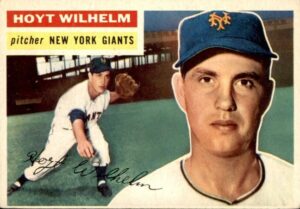 After his release from the service, Wilhelm returned to Mooresville, where he went 41-15 over two seasons and, in 1947, he was signed by the New York Giants. And, the rest, as they say, is history. Working primarily as a starter, he worked his way up from Class-B to Triple-A between 1948 and 1951 – going 56-46 and pitching to a 3.68 earned run average over 813 innings. For my home state (Minnesota) readers, Wilhelm spent the 1950-51 seasons with the Triple-A Minneapolis Millers – going 26-15, 4.41, primarily as a starter.
After his release from the service, Wilhelm returned to Mooresville, where he went 41-15 over two seasons and, in 1947, he was signed by the New York Giants. And, the rest, as they say, is history. Working primarily as a starter, he worked his way up from Class-B to Triple-A between 1948 and 1951 – going 56-46 and pitching to a 3.68 earned run average over 813 innings. For my home state (Minnesota) readers, Wilhelm spent the 1950-51 seasons with the Triple-A Minneapolis Millers – going 26-15, 4.41, primarily as a starter.
In 1952, Wilhelm stuck with the Giants and had a stellar rookie season – appearing in a league-leading 71 games, going 15-3 (his .833 winning percentage led the NL) and putting up a league-leading (among qualifiers – a minimum of 154 innings pitched) 2.43 earned run average. Surprisingly he finished a distant second in the Rookie of the Year balloting to another reliever, Joe Black of the Dodgers. Black got 19 votes to three for Wilhelm and one each for the Pirates’ Dick Groat and the Braves’ Eddie Mathews. As the chart below show, it seems like it should have been a lot closer.
A Unicorn
Hoyt Wilhelm remains the only MLB pitcher to win an earned run title in a season in which he did not start a single game.
To make a long story short, Wilhelm and his knuckler stayed in the big leagues through 1972. He pitched in 1,070 games (52 starts, more than half of them in 1959). His 1,018 relief appearances are fifth all-time and his 1,871 relief innings are first all-time, as are his 124 career wins in relief.
How Much Did Hoyt Wilhelm’s Knuckleball Flutter?
In his first 16 years in the major leagues, the teams Wilhelm suited up for led their league in passed balls in 15 campaigns. A couple of other indicators:
- In 1958, with Wilhelm on the staff, Indians’ catchers committed a league-topping 35 passed balls. In 1959, without Wilhelm in the fold, that number dropped to six.
- In 1959, Orioles’ catcher Gus Triandos had 28 passed balls – 24 of them came with Wilhelm on the mound.
Side Note: The statistics for the Hoyt Wilhelm “Who’s Your Daddy?” lineup are not as telling as for the starting pitchers who have been featured in these posts – primarily because batters did not rack up at bats at the same frequency (given Wilhelm’s role as a reliever). For example, 89 MLB batters had 50 or more at bats versus Bob Feller in his 18 MLB seasons, while just ten opposing batters reached up at least 50 at bats versus Wilhelm in 21 seasons. Still, the group featured here makes for an interesting lineup.
Wilhelm was an All Star in five seasons (eight All Star selections due to the playing of two All Star games from 1959 through 1962) and led the AL in earned run average, appearances and winning percentage twice each. (Notably, he led the AL in ERA once as a reliever and once as a starter.) Wilhelm finished in the top three in pitching appearances in six times, and in the top three in saves five times. From 1964 through 1968 he pitched in 306 games, with a 1.74 ERA
While Wilhelm was used primarily as a starter in just one of his 21 MLB seasons (1959 Orioles). He proved he could go the distance. In 32 games that season (27 starts), he went 15-11, led the AL with a 2.19 ERA. Made the All Star team, threw 13 complete game and delivered three shutouts.
Seeing Floaters? Just Swing.
On September 20, 1958, Hoyt Wilhelm started on the mound for the Orioles (in Baltimore) versus a tough Yankee lineup that included the likes of Mickey Mantle, Bill Skowron, Elston Howard, Bobby Richardson and Hank Bauer. At the time, the Yankees were in first place at 89-58, while the Orioles were in seventh at 68-77. Wilhelm proved up to the task, no-hitting the Yankees in a 1-0 victory. (The only run coming on a seventh inning Gus Triandos’ home run.) Wilhelm walked two and fanned eight in the 99-pitch outing.
—The Hoyt Wilhelm -Who’s Your Daddy? ” Lineup—
Let’s start with a few statistics.
Put Me In Coach
Hoyt Wilhelm faced Giants’ 3B Al Gallagher five times in his career – and never got him out (the most plate appearances for any player with a 1.000 on-base percentage versus Wilhelm). From 1970-72, Gallagher had five plate appearance versus Wilhelm and delivered three singles and two walks. Gallagher was a .263 hitter over four MLB seasons (1970-73 … Giants, Angels).
On the flip side, you find another 3B – the Red Sox’ Joe Foy. Foy faced Wilhelm 13 times over four seasons and never reached base against him (the most plate appearances versus Wilhelm for a hitter with 0.000 OBP versus the knuckleballer). Foy only got the ball out of the infield three times versus Wilhelm. Foy hit .248-58-291 over six MLB campaigns (1966-71 … Red Sox, Royals, Mets, Senators).
Now for the lineup that best handled Wilhelm’s flutterball.
Catcher – Roy Campanella
The knuckleball may have been hard to catch, but for at least a couple of catchers, it was not so hard to hit. Our starter at catcher is Hall of Famer Dodger Roy Campanella, who hit .469-2-12 versus Wilhelm over 33 games (1952-57). Campanella’s .469 average versus Wilhelm was the highest among any player with at least 20 career at bats against him. His fifteen hits were the third-highest against the knuckleballer, as were his 12 RBI. Campanella did not get his first hit against Wilhelm until his ninth plate appearance against him (two walks, a sacrifice, five outs). From that point on, he went 15-for-15-28, with five walks.
Campanella played ten years with the Dodgers (1948-57), hitting .276-242-856 and making eight All Star teams. He played ten years in the Negro National League II (1937-42, 1944-45), hitting .316-18-163, making three All Star squads and winning the 1944 Negro National League II batting title with .388 average.
Campanella was the National League MVP in 1951, 1953 and 1955.
Going Yard Twice
On August 13, 1953, Hoyt Wilhelm came on to relieve Al Worthington with his Giants leading the Dodgers 8-4, two men on and one out. Wilhelm got Jackie Robinson on an easy fly to second base, before Roy Campanella took a 2-1 pitch to deep RF for a three-run home run – cutting the margin to one. It stayed that way (8-7) until Campanella faced Wilhelm again with two outs in the top of the ninth. This time Campanella took Wilhelm yard to LF. The Giants eventually won 9-8 in ten innings.
Have to also give a shoutout to another catcher, Earl Battey, whose .414 average (12-for-29) versus Wilhelm was the second-highest among players with at least 20 at bats against him.
_______________________________________________________
First Base – Stan Musial
 Hall of Famer Stan Musial hit .375 against Wilhelm over 24 games. His four home runs tied for second (career) against Wilhelm. Like Campanella above, Musial had a two-home run game against Wilhelm. It came on May 2, 1954 in the second game of a doubleheader between Musial’s Cardinals and Wilhelm’s Giants (in St. Louis). In that game, Wilhelm came in to open the bottom of the fourth, with the Giants up 8-3. Musial connected off him for a two-run homer in the fifth and a solo shot in the seventh (his only two at bats versus Wilhelm in the game). The Giants did hang on to win 9-7.
Hall of Famer Stan Musial hit .375 against Wilhelm over 24 games. His four home runs tied for second (career) against Wilhelm. Like Campanella above, Musial had a two-home run game against Wilhelm. It came on May 2, 1954 in the second game of a doubleheader between Musial’s Cardinals and Wilhelm’s Giants (in St. Louis). In that game, Wilhelm came in to open the bottom of the fourth, with the Giants up 8-3. Musial connected off him for a two-run homer in the fifth and a solo shot in the seventh (his only two at bats versus Wilhelm in the game). The Giants did hang on to win 9-7.
Stan Musial’s record against Hoyt Wilhelm was a streaky one. From June 12, 1953 through May 2, 1954, Musial faced Wilhelm seven times and collected five hits (one single, one double and three home runs) and two walks (one intentional). Immediately after that streak of success, from June 20, 1954 through May 20, 1956, Musial faced Wilhelm nine times and got on base just once (an intentional walk). In those nine plate appearances, he got the ball out of the infield just once.
Musial was an All Star in 20 of his 22 MLB seasons. He was a three-time NL MVP, seven-time batting champion and led the league in a range of offensive categories: games (five times); runs scored (five times); hits (six times); doubles (eight times); triples (five times); RBI (twice); total bases six times); on-base percentage (six times); slugging percentage (five times); walks (once); and intentional walks (five times). He had a career batting average of .331 (3,630 hits in 10,972 at bats) and, despite 475 home runs, never led the league in homers.
An honorable mention at first base has to go to Steve Bilko, who hit .409 (9-for-22), with two homers and six RBI in 19 games versus Wilhelm. Bilko went .249-76-276 in ten MLB seasons (1949-54, 1958, 1960-62 … Cardinals, Angels, Dodgers, Reds, Cubs, Tigers).
______________________________________
Second Base – Tie: Jackie Robinson & Gene Baker
Hall of Famer Jackie Robinson hit .344 versus Wilhelm and drove in five runs in 34 games. Robinson also drew nine walks (tied for fourth all-time against Wilhelm) for a .500 on-base percentage versus the knuckleballer – second among MLB batters with at least 20 at bats versus Wilhelm.
Can’t Touch That
In Jackie Robinson’s first six plate appearances versus Hoyt Wilhelm not a ball was put in play – yet he was on base four times. (three walks, one hit by pitch and two strikeouts.)
Robinson played in 11 MLB seasons – 1945 with the Kansas City Monarchs and 1947-58 with the Dodgers. He hit .313-141-761, with 200 stolen bases in 1,416 games. He was the 1949 NL MVP, when he led the league with a .342 average and 37 steals – to go with 122 runs scored, 203 hits, 16 home runs and 124 RBI.
Gene Baker hit .467 (7- for-13) versus Wilhelm – with his one walk versus Wilhelm, he matched Robinson’s .500 on-base percentage. In nine MLB seasons (1948, 1953-58, 1960-61 … Monarchs, Cubs, Pirates), Baker hit .263-42-255. He was an All Star in 1955 (with the Cubs), when he hit .268-11-52 and played in all 154 games.
_____________________________________
Third Base – Rich Rollins
Rich Rollins hit Wilhelm for a .353 average in 33 games, with one home run and six RBI. His best game against the knuckler came on September 7, 1963 – when Rollins went three-for-four with an RBI versus Wilhelm), who pitched the first eight innings of a game his Orioles lost to Rollins’ Twins 4-2 in 12 innings. A Rollins’ two-run single in the twelfth (off Bruce Howard) was the winning hit in the contest.
Rich Rollins played in 10 MLB seasons (1961-70 … Twins, Pilots, Brewers, Indians). He hit .269-77-399 in 1,002 games. His best season was 1962, when he went .298-16-96, with 96 runs scored and made his only All Star team.
_______________________________________
Shortstop – Dick Groat
Dick Groat hit Hoyt Wilhelm at a .364 pace (8-for-22). Notably all eight hits were singles and he had just one RBI versus Wilhelm. That .364 average, however, puts Groat among the top ten batters with at least 20 at bats versus Wilhelm. (He’s also one of the most interesting “athletes” on this list – which may have swayed my selection slightly.)
Groat was an All-America at Duke University in both baseball and basketball. In fact, his best sport made have been hoops. As a senior (1951-52 college basketball season), he averaged 26 points and 7.6 assists per game (leading the NCAA in both categories) and was named the National Collegiate Player of the Year. In 1952, he also hit .370 and led the Duke baseball squad in hits, doubles, RBI and steals. Duke went 31-7 and made their first College World Series appearance that season.
Dick Groat was the first player elected to both the National Collegiate Basketball and Baseball Halls of Fame.
In 1952-53, Groat (finishing his senior year at Duke) signed (and played) with the NBA’s Fort Wayne Pistons. Shuttling back and forth between classes at Duke during the week and Pistons games on weekends. He averaged 11.9 points, 3.3 rebounds and 2.7 assists as a pro. In later interviews, Groat t noted “I never had to practice, just play on the weekend.”
That same year, Groat also signed a contract with the Pittsburgh Pirates. He played 95 games for the Pirates in 1952 – going straight from campus to the majors – hitting .284-1-29, providing superior defense and finishing third in the Rookie of the Year voting.
A stint in military service, then disrupted his athletic career(s). After Groat retuned from serving two years in the military, Pirates’ GM Branch Rickey convinced him to focus solely on baseball. Groat rejoined the Pirates – and the rest is history.
Groat played 14 MLB seasons (1952, 1955-67 … Pirates, Cardinals, Phillies, Giants), hitting .286-39-707, earning All Star honors in five seasons and being selected the 1960 NL Most Valuable Player (that season, he won the NL batting title with a .325 average). Groat also led NL shortstops in putouts in four seasons, assist twice and double plays turned at shortstop five times.
____________________________
OF – Al Kaline
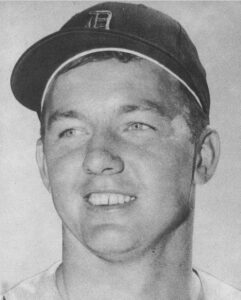
Photo: From collection of User: JGHowes, self-scanned for Wikipedia. JGHowes at en.wikipedia, Public domain, via Wikimedia Commons
Hall of Famer Al Kaline hit .348 against Wilhelm in 48 games (66 at bats/77 plate appearances). His four home runs tied for the second most versus Wilhelm, his 17 RBI were first, as were his 23 hits. In addition, his ten walks ranked second against Wilhelm (a tie with Bob Allison). Overall, he put up a .429 on-base percentage and a .606 slugging percentagte against the crafty knuckleballer.
That’s The Way To Wrap It UP
In his final five seasons against Wilhelm (1965-69), Kaline reached base in 15 of 20 plate appearances: six singles, one double, one triple, one home run, five walks, one safe on an error, five outs.
Kaline played 22 MLB seasons (1953-74) – all for the Tigers. He was an All Star in 15 of those seasons and led the AL in batting in one (1955 at .340). He retired with a .297 average, 3,007 hits, 399 home runs, 1,582 RBI and 1,622 runs scored – as well as 10 Gold Gloves. He hit over .300+ in nine seasons and had 25 or more home runs in seven.
_____________________________________
OF … Gary Geiger
Gary Geiger hit .379 (11-for-29), with a triple, three home runs (fifth-highest versus Wilhelm) and six RBI in 17 games versus Wilhelm – and I needed someone with CF experience in the Garden.
Happy Fourth of July
Gary Geiger celebrated Independence Day 1960 by collecting a walk, a surprise bunt single and a two-run home run versus Wilhelm – who had come on in relief of Steve Barber – as Geiger’s Red Sox topped Wilhelm’s Orioles 10-7 in Boston.
Geiger played in 12 MLB seasons (1958-67, 1969-70 … Indians, Red Sox, Braves, Astros). He career stat line was .246-77-283 in 954 games.
Geiger, notably, started his professional career primarily as a pitcher (but with some time in the outfield as well). In 1955, Geiger went 20-7, 1.98 with the Class-D Hilton Cardinals, leading the league in complete games (26 in 27 starts), strikeouts (177) and shutouts (8). (All this, despite control problems: 115 walks in 236 innings). The Cardinals’ organization had pretty solid pitching depth and, in 1956 (at Triple-A), Geiger went 3-2, 3.78 in 29 games on the mound, but also hit .327 in 39 games. (He also walked 77 batters in 100 innings). The die was cast and Geiger’s professional career moved forward as an outfielder.
He made it to the major leagues in 1958 (with the Indians) and played 12 often injury-marred MLB seasons (1958-67, 1969-70 … Indians, Red Sox, Braves, Astros) – hitting .246-77-283 in 954 games.
_____________________________
OF … Carl Furillo
Carl Furillo hit Hoyt Wilhelm at a .333 pace (15-for-32) and, with five walks, had a .409 on-base percentage against him. Furillo’s ten RBI versus Wilhelm tied for the fourth-most against him and his three doubles tied for second (he also had two homers against Wilhelm). On August 19,1953, Dodgers’ Furillo faced Wilhelm (who came on for the Giants in the third inning, with New York up 5-2) three times. In his three at bats versus Wilhelm that day, Furillo delivered a two-run single to center; a double to left; and an RBI double (also to left).
Catching Up to the Old Master
Carl Furillo had just one hit (a single) in his first 13 career at bats versus Hoyt Wilhelm (July 3, 1952 through July 12, 1953) and, in fact, got just one ball out of the infield during that time (and even that was ground ball that reached left field). Then (beginning in his second at bat versus Wilhelm on July 12, 1953 through his last at bat versus the knuckleball master on July 18, 1957, Furillo went 12-for-26 (.462) against him with three doubles, two homers and ten RBI.
________________________________________
Pitcher – Hal Jeffcoat
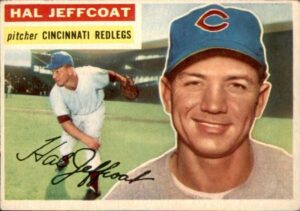 Okay, I found an interesting one for this spot. Hal Jeffcoat, who played in 12 MLB seasons (1948-59 … Cubs, Reds Cardinals). Over those12 campaigns he made 245 mound appearances and 559 in outfield. His best season on the mound was probably 1956, when he went 8-2, 3.84 in 38 games (sixteen starts, two complete games). His best season at the plate was his rookie campaign (1948), when he hit .279-4-42 in 132 games.
Okay, I found an interesting one for this spot. Hal Jeffcoat, who played in 12 MLB seasons (1948-59 … Cubs, Reds Cardinals). Over those12 campaigns he made 245 mound appearances and 559 in outfield. His best season on the mound was probably 1956, when he went 8-2, 3.84 in 38 games (sixteen starts, two complete games). His best season at the plate was his rookie campaign (1948), when he hit .279-4-42 in 132 games.
Jeffcoat went 6-for-11 (.545) in 11 games versus Wilhelm (Jeffcoat played CF in eight of the 11, pitched in three).
Hal Jeffcoat wen .248-26-188 over 12 MLB seasons (1948-59 … Cubs, Reds, Cardinals) and 39-37, 4.22 as a pitcher.
Like Hoyt Wilhelm, Hal Jeffcoat earned a Purple Heart in World War II. (He was a paratrooper with the 101st airborne. )
Jeffcoat was first recruited as a pitcher, with the endorsement of his brother George Jeffcoat, who made it to the major leagues ahead of him as moundsman. Hal’s three older brothers all pitched professionally and young Hal had had shown promise in high school and semi-pro ball before serving in the military.
After competing military service Hal signed with the Cubs’ Double-A Nashville Volunteer, who (on the word of his brother George) were expecting a pitching prospect. Hal showed up in minor-league camp and informed his new bosses that he was an outfielder, not a pitcher – and he quickly proved it – hitting .291-15-75 at Class B and Double-A in 1946 and .346-4-118 at Double -A in 1947, also showing hustle (36 steals in two seasons) and defensive prowess and powerful arm. In 1948, he was with the Cubs (a 23-year-old rookie) and hit .279 in 134 games, while leading NL centerfielders in outfield assists with 11. (Jeffcoat finished in the top two in CF assists in three of his first four MLB seasons
After a few seasons marked by injuries and less than stellar offensive production, Jeffcoat agreed to tryout his stuff on the major-league mound. He made his first MLB pitching appearance in his seventh MLB seasons (1954). And from that time on made just four more outfield appearances.
And, that is how he came to be the pitcher in this Hoyt Wilhelm, “Who’s Your Daddy/” Lineup.
Primary Resrouces for this post: Baseball-Referene.com; Pirates Star Dick Groat, who also played in the NBA, dies at 92, Will Graves, April 27, 2o23, Associated Press; Hoyt William Society for American Baseball Research Bio, by Mark Armour; Gary Geiger, SABR Bio, by Norm Ginsberg; Hal Jeffcoat, SABR Bio, by Andrew Sharp.
_______________________________________
Who’s Your Daddy? The Inspiration.
On September 24, 2004, in the middle of a tight pennant race, the Yankees handed future Hall of Famer Pedro Martinez and the Boston Red Sox a tough 6-4 loss. Martinez went 7 1/3 innings giving up nine hits and five earned runs. The game came just five days after (in his previous start) Martinez had lasted just five frames against the Bronx Bombers (eight hits, eight earned runs) in a 16-7 loss.
After that second loss, Martinez candidly commented, “What can I say? I just tip my hat and call the Yankees my daddy.” Little did he know that his comment – and a Yankee fans’ chant of “Who’s your daddy?” would follow him into future starts in New York (all the way to his final MLB start – against the Yankees for the Phillies – in Game Six of the 2009 World Series).
The concept of “Who’s your daddy?” became the inspiration for Baseball Roundtable to take a look at the players who “had the number” of some of MLB’s premier pitchers. Again, you can find links to the previous “editions” of “Who’s Your Daddy?” near the top of this post.
Baseball Roundtable – Blogging Baseball Since 2012.

 Baseball Roundtable is on the Feedspot list of the Top 100 Baseball Blogs. To see the full list, click here.
Baseball Roundtable is on the Feedspot list of the Top 100 Baseball Blogs. To see the full list, click here.
Baseball Roundtable is also on the Anytime Baseball Supply Top 66 Baseball Sites list. For the full list, click here.
I tweet baseball @DavidBaseballRT
Follow/Like Baseball Roundtable’s Facebook Page here. Find More baseball commentary; blog post notifications; PRIZES.
Member: Society for American Baseball Research (SABR); Negro Leagues Baseball Museum; The Baseball Reliquary.
P1003
